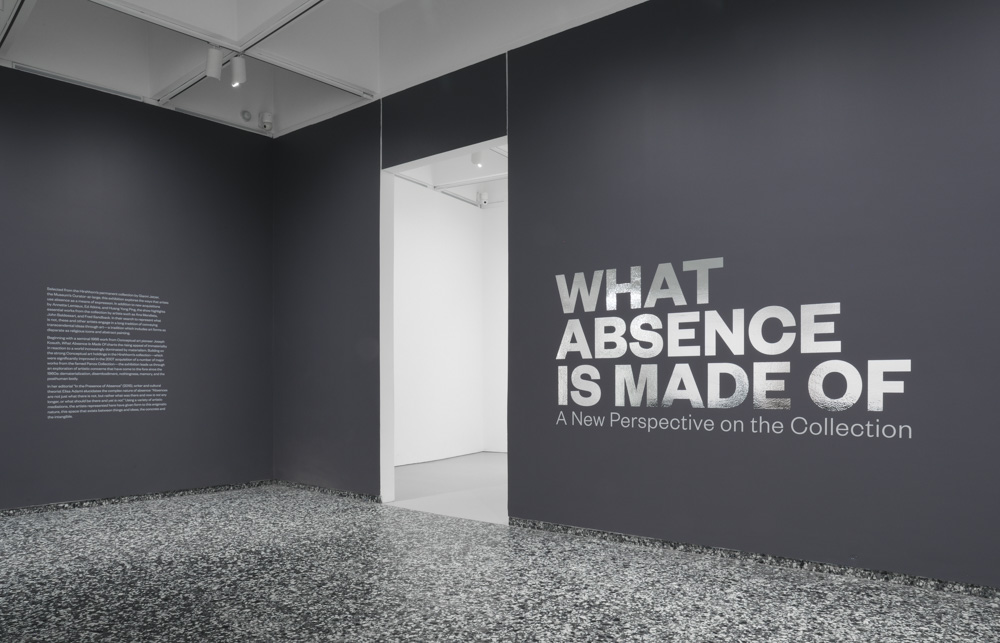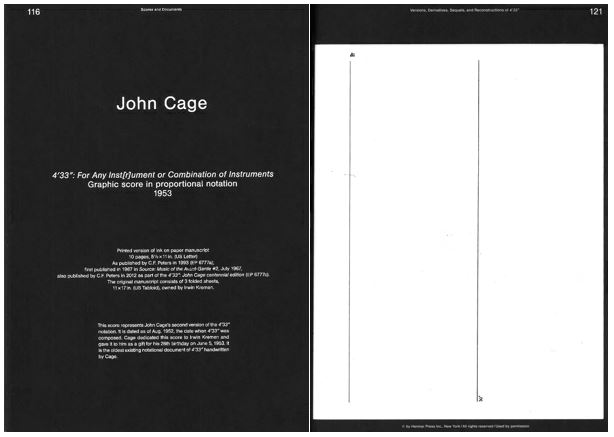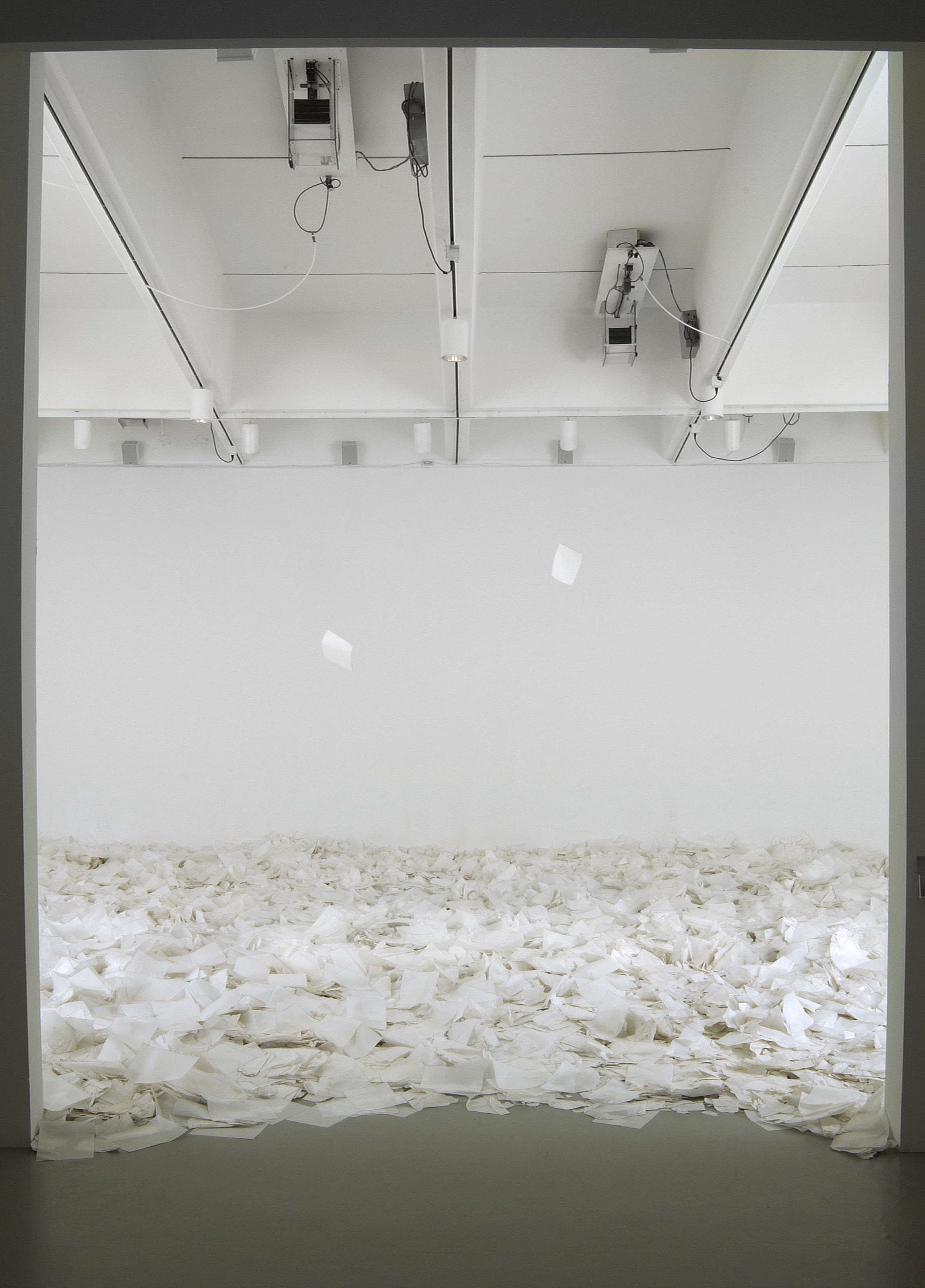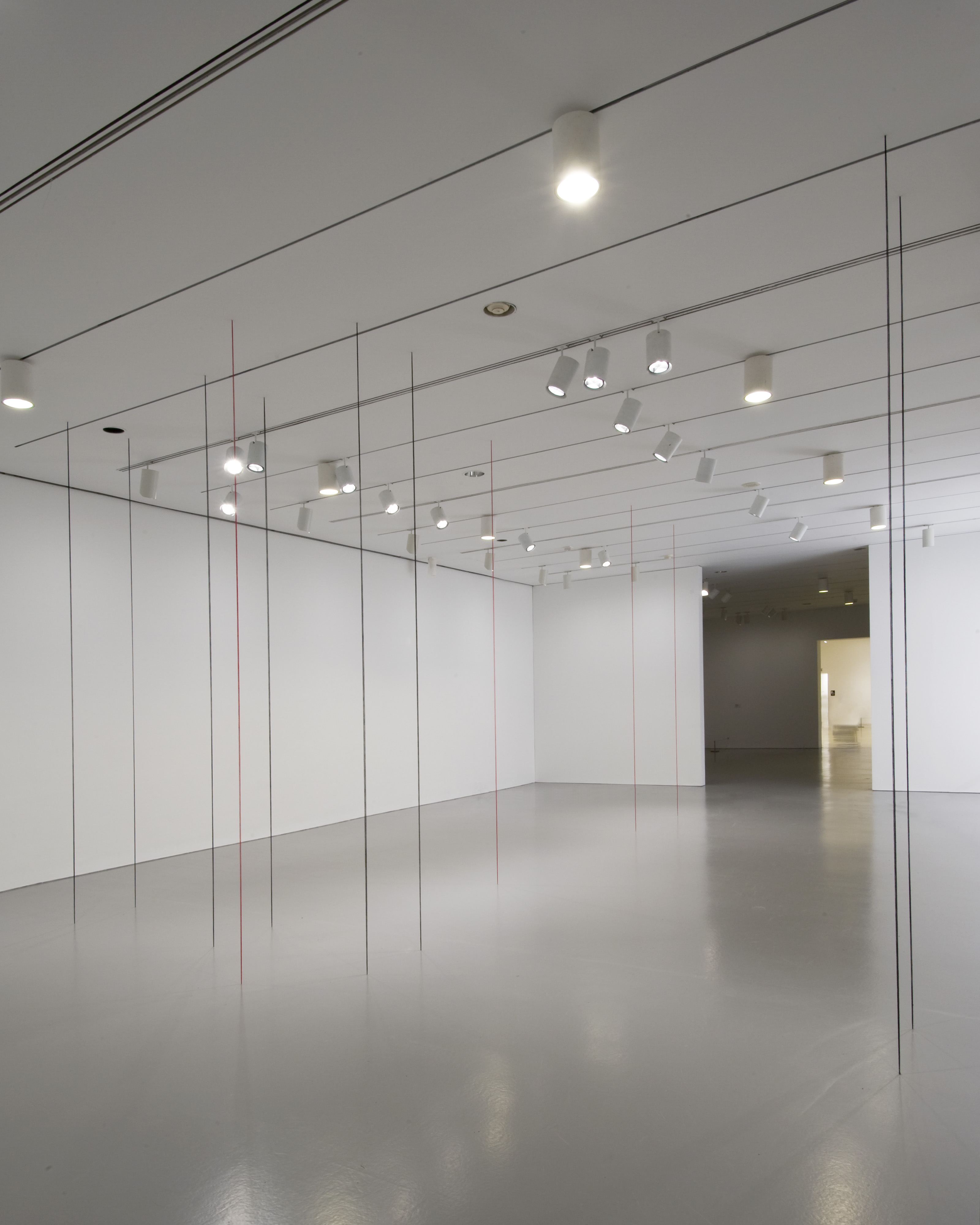Paul Allen Sommerfeld volunteered in the Hirshhorn Library July 2017-March 2018. He holds a Ph.D. in Musicology from Duke University, and is currently pursuing a Master of Library Science at Catholic University. His research focuses on music, film/media, and fandom cultures in the twentieth and twenty-first centuries. In April 2018, he began as a full-time Reference Librarian in the Music Division of the Library of Congress.
The Hirshhorn Museum and Sculpture Garden’s current permanent collection exhibition, What Absence is Made Of (October 2017 – Summer 2019), offers a new perspective on the museum’s collection of conceptual artwork by asking: what does absence look like? The rise of conceptual visual art in the late 1960s—whose currency rested in ideas instead of physical objects—also resonates with musical developments that began in mid-twentieth century music, begging the question: what does absence sound like?

To answer this question, I went digging in the collections of the Hirshhorn Museum and Sculpture Garden Library, and found Sounds like silence : John Cage – 4’33” – silence today – 1912, 1952, 2012. John Cage stands as one of the most influential composers of the twentieth century. Best known for his 1952 composition 4’33” (commonly pronounced as “four minutes and thirty-three seconds”), Cage and his works proved instrumental to developments in composition, dance, and art. Cage wrote 4’33” for any instrument or combination of instruments. Divided into three movements, the score instructs the performer(s) not to play their instruments throughout the entire piece. The piece instead becomes the sounds of the environment in which it is performed. The length of performance also varies. Indeed, the title itself refers to the length of the first public performance: a solo piano. The pianist simply opened and closed the lid of the piano’s keyboard to mark the beginnings and endings of each movement.
Compositions like 4’33” push listeners to experience sounds as themselves, rather than vehicles for intention. In other words, these works force listeners to become part of the work itself and pay attention to the otherwise seemingly mundane, everyday parts of life. But the deliberate absence of musical sound in 4’33” does not create pure silence. Coughs, sneezes, bodies shifting in chairs, neighbors breathing, shuffling feet, and more distant echoes of the outside seem to permeate the space for a unique listening experience—never to be repeated in quite the same way.

This invitation to listeners to receive and respond to the environments around them echoes many visual artists, from Robert Rauschenberg’s famous White Paintings to many of the artists represented in What Absence is Made Of. When I returned to the galleries, I found sound defined by silence as codified by Cage reverberating throughout the Hirshhorn exhibit. Blank, drifting papers that randomly yet regularly fill the gallery space in Ann Hamilton’s at hand (2001, which was on exhibit until February 2018) create a gentle musical rhythm. Hamilton encourages participants to listen to the silence of paper falling through air, but the silence of their falling is itself defined by the sounds of the gallery space: the same kinds of white noise that define Cage’s 4’33”. Silence also invades Ed Atkins’ Safe Conduct (2016), a three-channel video installation with 5.1 surround sound. The work parodies airport security instruction videos, and the infectious melody from Maurice Ravel’s Bolero (1928) fills the sound-proof walls. The silence that follows its eventual crescendo of musical hysteria seems welcome, even cathartic. Yet the music’s juxtaposition against the violence the avatar experiences operates as its own kind of deafness, like an indifferent silence. The music’s presence defines the absence of the avatar’s own humanity—again exploring the question of what does absence sound like.

Cage’s score for 4’33” prefigures many of the ideas suggested throughout What Absence is Made Of. The original manuscript is lost, but researchers to the Hirshhorn Museum and Sculpture Garden Library can view reconstructions of the score, as well as sequels and derivatives in Sounds like silence : John Cage – 4’33” – silence today – 1912, 1952, 2012, the catalog for a 2012 retrospective on the composition. Empty staves seem but ghostly images whose absence of notes nevertheless conjure sound—in its many guises—as mementos of past experience. The included meter and time markings seem almost arbitrary. These notations define otherwise empty space, much like Fred Sandback’s Untitled (Sculptural Study, Twelve-part Vertical Construction) (1990), also included in What Absence is Made Of. For 4’33” in particular, a score empty of written notes similarly engages in the “pedestrian space,” as Sandback called it, of ordinary life. Participants are again encouraged to pay attention to their everyday surroundings, whether they be visual or sonic. From this perspective, absence may sound louder than you ever thought.

Further reading available at the Hirshhorn Library:
Kostelanetz, Richard (ed.). John Cage (New York: Praeger, 1970).
Cage, John, et al. The Guests Go in to Supper (Oakland, Calif.: Burning Books, 1986).
Gray, David (ed.). Fred Sandback: Vertical Constructions (New York: David Zwirner, 2017).
Simon, Joan. Ann Hamilton : an inventory of objects (New York: Gregory R. Miller & Co., 2006).

Be First to Comment